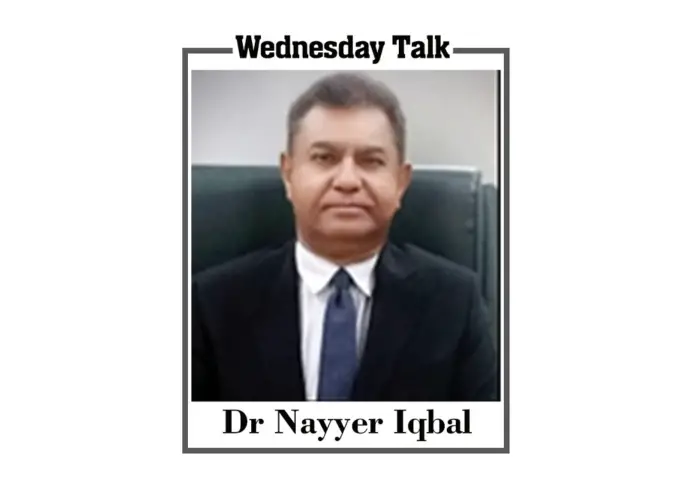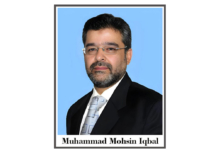After assumption of presidency in 2012, Xi Jinping made China, a highly vibrant country on the external affairs front. No Chinese leader, whether ancient or modern, had attracted so many international big-wigs to Beijing as Xi did. In the initial five years, he hosted as many as 05 major summits which included: the 4th summit of the Conference on Interaction and Confidence-building Measures in Asia (May 2014), the Asia-Pacific Economic Co-operation summit (November 2014), the G20 Hangzhou summit (September 2016), the Belt and Road- Forum for International C-operation (May 2017), and the 9th BRICS summit (September 2017). However, the commemoration parade dated September 3, 2015 on the 70th anniversary of victory over Japan in World War-ii wherein 30 heads of state or government participated was the most conspicuous. This trend of making Beijing the hub of international diplomatic activity has continued without any pause. Xi’s strong personal interest in foreign affairs can be gauged from the fact that during first 05 years of his presidency he flew more than 350,000 miles, visited five continents and delivered over 100 speeches to the foreign audiences. His phone and video foreign meetings considered to be part of his ‘cloud diplomacy’ received extraordinary coverage in the national media, on the pattern of his in- person foreign tours. Xi’s foreign policy has also impacted the global economic development in an unprecedented manner through 03 gigantic initiatives: the Asian Infrastructure Investment Bank, the Belt and Road Initiative, and The New Development Bank. Additionally, 03 multilateral financial institutions with a combined total of $ 200 billion in authorized capital were also founded.
President Xi’s foreign policy is in complete contrast to the previous behavior: through his ‘Major Country Diplomacy’ doctrine containing ‘assertiveness’ has practically replaced the Deng Xiaoping’s preaching of ‘Keep a low profile’ which stressed a ‘compromise’. Xi stands for a more active role for China on the world stage, becoming of its stature and power; and wants reformation in the international order according to the changed realities of the global politics. In this connection, Xi articulated two guidances; (i) China should lead the world in formulating a more just and reasonable international order, and (ii) China should guide the global community in protecting the world security. Xi emphasizes upon the Chinese diplomatic core to exhibit a ‘fighting spirit’ as per his ‘wolf-warrior diplomacy’. He also sets a ‘base-line thinking’ in Beijing’s foreign policy which the other countries must not cross. Needless to say that Xi Jinping remains engaged in an open ‘ideological competition’ with the US-led West in all the possible spheres of life. President Xi stresses that ‘unilateral economic restrictions and trade discrimination are impermissible measures for countries to use in foreign policy goals and has positioned itself generally as a proponent of global free trade’. The key-note of his speech during the Davos Economic Forum in January 2021 was the same. Xi does not waste any opportunity to prove superiority of the Chinese system and its ability to manage: he even used the COVID-19 pandemic for the purpose through ‘mask diplomacy’ and the ‘vaccine diplomacy’.
President Xi considers the China-US relationship in the present-day world as a ‘new type of relations’ and warns that a confrontation between the two ‘would surely spell disaster’. It is the complexity of China-US equation that compelled the political scientist Graham Allison to use the term of ‘Thucydides Trap’ for elaborating the situation. The US has been critical of China’s activities in the South China Sea and China has reciprocated by condemning ‘strategic pivot’ to Asia, QUAD, and UKAS. Xi has asked the Asians countries time and again ‘to unite and forge a way together rather than get involved with third-party powers, seen as a reference to the United States’. Xi keeps on indicating that a ‘win-win co-operation’ between China and the US will be an ideally workable arrangement. The bitterness created during ‘Trade Wars’ of Trump era, Washington’s Taiwan-related activities, and highlighting of China’s human rights conditions seems to has been de-escalated particularly after the November-2022 Bali G-20 Summit and SOS Antony Blinken’s recent visit to Beijing. The credit goes to both the countries that it happened despite Chinese ‘spy balloon episode’ and US’s recent tightening of semiconductor regulations. There is also a silver-lining in the rise of ‘institutional balancing’ which involves seeking advantage by using the rules and norms associated with international institutions. Amid fears of confrontation on this ground most of the analysts consider it ‘healthy’, capable to strengthening international co-operation, making multilateral institutions more relevant, dynamic and investment-oriented; and providing a way to compete responsibly without resorting to military conflict. The example of Washington’s 2001 successful effort to incorporate China into WTO on the condition of liberalizing parts of its economy is particularly encouraging, apart from numerous other illustrations. However, China’s recent foreign relations law “enshrining its right to impose ‘countermeasures’ against actions that it deems a threat” has the potential to mar the environment because ‘it spells a more assertive foreign policy and stronger push-back against the US.
Xi does not enjoy harmonious relationship with Japan either due to continuous rift over ‘Senkaku islands’ leading to declaration of ‘Air Defense Identification Zone’ in the end of 2013. Xi has improved relations with Russia up to a noticeable extent where-in his strong personal bond with President Vladimir Putin has played a key-role. Political analysts opine that the ‘nationalist orientation’ of both the leaders and ‘assertion against the western domination’ served as the basis of this closeness. The Ukraine crises lingering-on since 2014 has also been instrumental in bringing Beijing and Moscow closer to each-other and making them the largest trading partners of each other. Simultaneously, Xi tries to avoid alienating the West and keep-on projecting a ‘friendly façade’ to the European leadership to lure-in more foreign capital. Coming to India: during Xi’s tenure bilateral trade between the two countries has witnessed exponential growth and they have become huge trade partners. However, the age-old border dispute between the two has proven to be a major bone of contention leading to a three-year long stand-off on the disputed boundary-line. Meanwhile, China has tightened its grip over the entire Indian Ocean region during Xi’s government by creating a network of military and commercial facilities (so-called, string of pearls) and strengthening its economic relations with countries of the region particularly with Sri Lanka and Maldives .The economic dependencies of various regional countries on China has eroded New Delhi’s influence in its immediate neighborhood compelling India to protect its regional status vigorously. On the other hand, Xi-led China is concerned about India’s continuously growing military relations with the US. New Delhi’s relative power and its ability to safeguard its smaller neighbors have also come into question due to its inability to push-back China from its border. Both China and India insist that they want to rebuild trust but they have not been able to agree on the process (to be continued).







